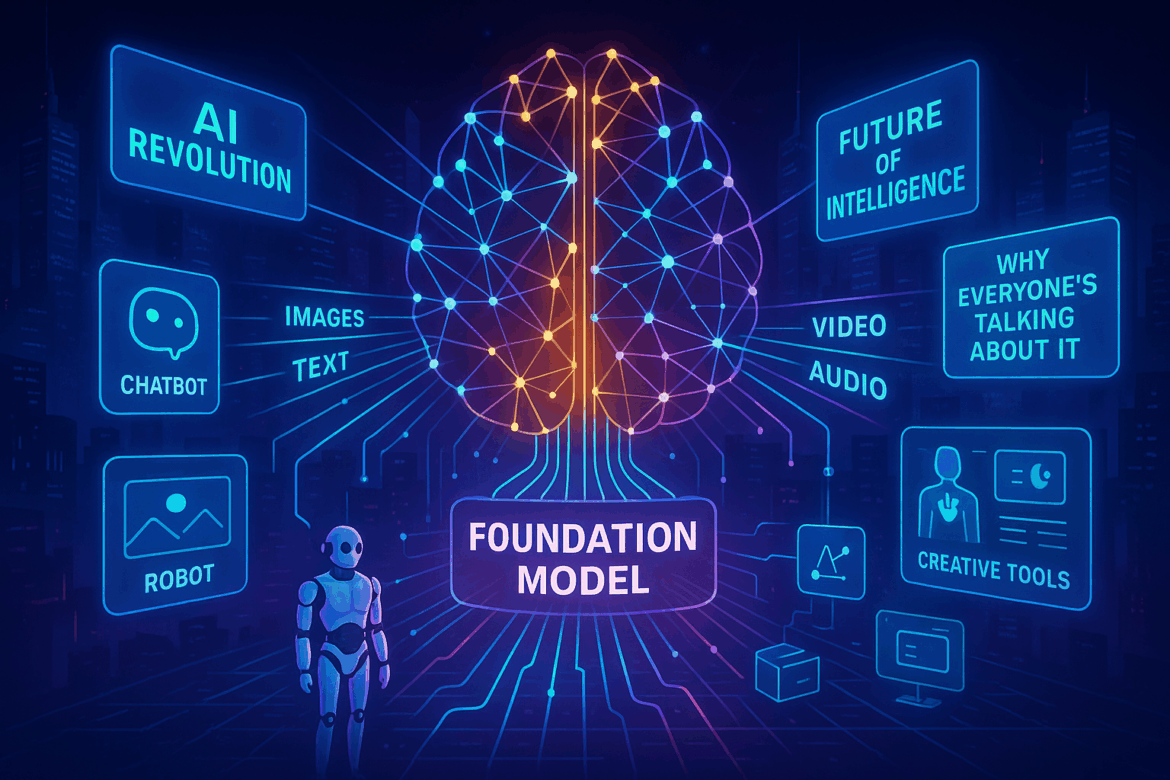Artificial Intelligence is growing , and one of the biggest breakthroughs in recent years has the name Foundation Models. If you’ve heard names like ChatGPT, DALL·E, or Bard, you’ve already seen foundation models at work—even if you didn’t know it.
In this blog, we’ll explain what a foundation model is how it works, and why it’s changing the game in the world of AI.
What Is a Foundation Model?
A foundation model is a strong, all-purpose AI system that learns from massive amounts of data and can handle many different jobs—like writing text looking at images, creating code, and more.
Rather than creating a new AI system for each task, foundation models are built to be adaptable. After training, they can be used or tweaked for various purposes.
It’s similar to constructing a solid base and then adding different layers based on what you want it to do.
How Do Foundation Models Work?
These models are trained using a method called deep learning with something known as transformers. These are clever systems that recognize patterns in data—whether it’s text, pictures, or even audio.
Here’s a straightforward breakdown:
- The model learns from huge datasets (like books, websites images).
- It gets better at understanding context, patterns, and meaning.
- After training, you can use it for lots of things—like writing a blog post, answering questions, summing up an article, or making art.
All this happens without starting over each time. That’s what makes it so useful.
Why Are Foundation Models a Big Deal?
Foundation models are changing how we use AI. Here’s why they matter:
✅ One Model Many Jobs
A single foundation model can handle many tasks—text creation, image recognition, translation, and more.
✅ Quicker Development
Since you don’t have to start from scratch, companies and programmers can build AI tools way quicker.
✅ More Intelligent Outcomes
These models grasp human speech and context better than older AI setups making them a lot more dependable and helpful.
✅ Saves Money in the Long Run
While training these models costs a lot using or tweaking them later is way cheaper and more effective.
How Are People Using Foundation Models?
You’re already dealing with them. Here are some typical applications:
- Chatbots & AI Assistants: Think ChatGPT, Google Bard, or Microsoft Copilot
- Image Generators: Tools like DALL·E or Midjourney turn text into pictures
- Content Creation Tools: Help you write blogs, emails, scripts, or social posts
- Healthcare & Legal: Give doctors and lawyers a hand to analyze tricky documents
- Education & Training: AI-powered tools tailor learning to each person
Do Any Problems Come Up?
You bet—like any game-changing tech, we need to keep an eye on a few things:
⚠️ Bias and Wrong Info
If the data used to train the AI has bias, it might spit out unfair or off-base results.
⚠️ High Energy Use
Big models need lots of computing power and electricity to train.
⚠️ Data Privacy
We must ensure that private information doesn’t get mishandled or revealed.
⚠️ Unclear Rules
Governments and groups still work out how to control this type of AI.
What’s Next for Foundation Models?
The future looks bright. These models serve as the core components of cutting-edge AI tools. As they improve, we’ll find them in more everyday products and services.
Major tech firms such as OpenAI, Google, Meta, and Amazon are already putting a lot of money into this field. And as open-source AI grows even smaller new companies can begin to create clever tools using these strong models.
